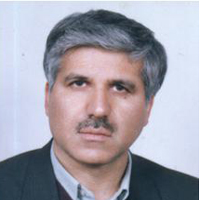مقالات رزومه رستم خلیفه زاده
-
اطلاع از شایستگی مراتع پیش نیاز بهره برداری از گیاهان دارویی آن مراتع است. بر همین اساس، این پژوهش با هدف ارزیابی قابلیت بهره برداری از گیاهان دارویی بر مبنای شاخص های اکولوژیکی و اقتصادی، در 12 رویشگاه معرف مناطق نیمه استپی انجام شد. برای این منظور، پس از اندازه گیری پوشش گیاهی و برآورد تولید گیاهان دارویی، شاخص های اکولوژیکی و اقتصادی مرتبط با بهره برداری از گیاهان دارویی در هر رویشگاه محاسبه شد. در پایان، بر مبنای معیارها و شاخص های مذکور، طبقه شایستگی هر یک از رویشگاه ها طبق دستورالعمل FAO و به روش عامل محدودکننده مشخص گردید. نتایج نشان داد که مقدار تولید علوفه قابل برداشت رویشگاه ها از 90 تا 591 کیلوگرم در هکتار متغیر است. سهم تولید گیاهان دارویی رویشگاه ها نیز 5% تا 58% بدست آمد. به عبارتی، مقدار تولید گیاهان دارویی رویشگاه ها از 27 تا بیشتر از 383 کیلوگرم در هکتار متغیر بود. بر این اساس، ارزش مورد انتظار هر هکتار از رویشگاه ها از محل بهره برداری از گیاهان دارویی، با در نظر گرفتن نرخ تنزیل 5.4% در شهریورماه 1399، 3 تا 41 دلار در هکتار متغیر است. در مجموع، 25% از رویشگاه ها دارای شایستگی خوب، 17% دارای شایستگی متوسط، 25% دارای شایستگی کم و 33% غیر شایسته از نظر تولید و بهره برداری از گیاهان دارویی بودند، در صورتی که شایستگی تمامی رویشگاه ها از نظر تولید علوفه برای چرای دام خوب بود. بنابراین، بهره برداری از همه رویشگاه ها نمی تواند نقش مهم و یکسانی در بهبود معیشت مرتع داران داشته باشد و با رویکرد حفظ ذخایر ژنتیکی گیاهان ، بهره برداری از گیاهان دارویی در تمامی رویشگاه های مرتعی توصیه نمی شود. علاوه بر این، حد بهره برداری مجاز در هر رویشگاه، متناسب با وضعیت و گرایش مرتع و حساسیت خاک به فرسایش، متفاوت است.کلید واژگان: استفاده چند منظوره, شاخص های اکولوژیکی و اقتصادی, گیاهان دارویی, شایستگی مرتع}The knowledge of rangelands suitability is a requirement for the exploitation of medicinal plants of those rangelands. Accordingly, the present study was conducted to evaluate the exploitability of MPs in 12 representative habitats of semi-steppe regions based on the ecological and economic (E&E) indices. For this purpose, after measuring the vegetation and estimating the production of MPs, the E&E indices related to the exploitation of MPs in each habitat were calculated. Finally, based on the indices, the suitability class of each habitat was determined according to the FAO guidelines by the limiting factor method. The results showed that the forage available of habitats varied from 90 to 591 kg.ha-1. Also, the share of MPs production in habitats was obtained between 5 and 58%. In other words, the production of MPs in the habitats varied from 27 to more than 383 kg.ha-1. Accordingly, the expected value of each hectare of habitats from the exploitation of MPs, taking into account the discount rate of 5.4% in September 2020, varied from 3 to 41 $.ha-1. Overall, the suitability of the habitats varied between good to unsuitable (25% good, 17% moderate, 25% low, and 33% unsuitable) in terms of production and exploitation of MPs, but all the habitats had good suitability in terms of forage production for grazing. Therefore, the exploitation of all the habitats cannot play an important and equal role in improving the livelihood of pastoralists and with the approach of preserving the plant genetic resources, the exploitation of MPs in all the rangeland habitats could not be recommended. In addition, the permitted exploitation limit in each habitat varies according to the conditions and trend of the rangeland and the sensitivity of the soil to erosion. This issue should be considered in the policy of paying attention to MPs, and it should be emphasized in the multi-purpose rangeland management plans.Keywords: Multi-purpose use, ecological, economic indices, Medicinal plants, Rangeland suitability}
-
با توجه به خدمات متفاوت مراتع، در این مقاله، تلاش شده است تا با نگرشی اجمالی بر تعاریف و تعیین تیپ های گیاهی مناطق رویشی آلپی/شبه آلپی ایران، شناختی اکوسیستم محور در این خصوص ارایه شود.در این راستا، انواع ساختار رویشی، بر پایه اطلاعات پوشش گیاهی حاصل از «طرح شناخت مناطق اکولوژیک کشور» تعریف شده اند.بر اساس این طرح، و با در نظرگرفتن مناطق بالاتر از ارتفاع 2700 متر از سطح دریا، مساحتی حدود 2/2 میلیون هکتار دارای پوشش گیاهی آلپی/شبه آلپی هستند.این مناطق بر اساس ساختار پوشش (شکل های رویشی و جنس های گیاهان)، به ترتیب مساحت، به بوته ای ها و بالشتکی ها، گندمیان، پهن برگان علفی و ارس زارها تقسیم شدند. طرح شناخت مناطق اکولوژیک کشور، درباره جوامع تنک کوهسری، مانداب ها و چمنزارها اطلاعات چندانی به دست نمی دهد. همچنین، به نظر می رسد که تنوع تیپ ها و ساختارهای گیاهی به دست آمده، بیانگر این واقعیت باشند که معیار ارتفاع بالاتر از 2700 متر از سطح دریا به تنهایی برای تلقی عبارت رویشی آلپی برای کل کشور نمی تواند پاسخگو باشد و معیارهای به روز و دقیقتری می تواند در مطالعات آتی به تعریف و تحدید این مناطق در نواحی مختلف رویشی کمک کند. طرح های کلان پژوهشی و اجرایی بر مبنای چالش ها و فرصت های این نواحی پیشنهاد شده است که مهمترین آنها پایش تفصیلی و حفاظت است. پیچیدگی و شکنندگی این اکوسیستم ها، اولویت این نواحی در برنامه های احیا و اصلاح را نشان می دهد.کلید واژگان: کوه های مرتفع, نواحی رویشی, شکل های رویشی}Iran Nature, Volume:7 Issue: 2, 2022, PP 67 -75In this study, regarding to the diversity of rangeland services, we tried to explain structure of alpine/subalpine ecosystem habitats using a brief review on current data and determine their dominant vegetation types in Iran. In this regard, different vegetation characteristics were determined using the data of the previous project of “Recognition of ecological zones of Iran”. On the basis of the information of mentioned project, the regions above 2700 m a.s.l., equal to 2.2 m ha were considered as alpine/subalpine vegetation zones. These zones, have been categorized according to their vegetation formations (growth forms and plant genus) and the area occupied by bushes and cushion plants, grasses, forbs and Junipers, respectively. The final report of the project of recognition of ecological zones of Iran, has lack of data for vegetation types of the peak areas, wetlands and meadows. According to diversity in vegetation types and structures, selecting the area above 2700 m a.s.l, is not a valid criteria for the alpine vegetation in the whole country’s area, so, it required a up to date and precise criteria to identify and distinguish this areas within different vegetation zones. Therefore, it need further studies according to challenges and opportunities of these areas, which among them, detailed monitoring and conservation, are the most important plans. The complexity and vulnerability of these ecosystems emphasize the priority of eco-restoration plans for these vegetation zones.Keywords: High mountains, growth zones, growth forms}
-
نشریه سنجش از دور و سامانه اطلاعات جغرافیایی در منابع طبیعی، سال دوازدهم شماره 2 (تابستان 1400)، صص 5 -8
پیشینه و هدف:
کربن آلی خاک در اکوسیستم های مرتعی از کارکردهای متنوعی همچون افزایش حاصلخیزی خاک، کنترل فرسایش، افزایش نفوذپذیری آب در خاک و کاهش اثرات گازهای گلخانه ای برخوردار است. ازاینرو یک شاخص کلیدی در تعیین سلامت خاک محسوب می شود که تمامی ویژگی های فیزیکی، شیمیایی و بیولوژیکی خاک را تحت تاثیر خود قرار می دهد. وسعت زیاد مراتع کشور، استفاده از روش های سنتی در برآورد کربن آلی خاک را با چالش جدی مواجه می کند. در چنین شرایطی استفاده از قابلیت های دورسنجی می تواند بهعنوان گزینه ای مناسب برای پایش کربن آلی خاک مراتع کشور مطرح باشد. پژوهش حاضر باهدف تعیین مهمترین عوامل طیفی تاثیرگذار بر کربن آلی در افق سطحی خاک در دو مرتع ییلاقی انجام شد.
مواد و روش ها :
پژوهش حاضر در دو مرتع ییلاقی لزور و آساران انجام شد. مرتع لزور به مساحت 8150 هکتار و ارتفاع متوسط 2875 متر در محدوده طول های شرقی 52.514 تا 52.694 درجه و عرض های شمالی 35.855 تا 35.934 درجه در استان تهران و مرتع آساران به مساحت 5642 هکتار و ارتفاع متوسط 2465 متر در محدوده طول های شرقی 53.265 تا 53.392 درجه و عرض های شمالی 35.804 تا 35.882 درجه در استان سمنان واقعشده است. در این تحقیق از اطلاعات سنجنده OLI ماهواره لندست 8 استفاده شد. پس از انجام عملیات پیش پردازش تصاویر ماهواره ای مناطق موردمطالعه، لایه های اطلاعاتی بازتابش بالای اتمسفر باندهای 2 تا 7 همراه با متغیرهای آلبیدوی سطح، شاخص رس، شاخص کربنات، شاخص اندازه ذرات، NDVI، شاخص های روشنایی، سبزینگی و رطوبت تبدیل تسلدکپ محاسبه شد. در هر یک از مناطق موردنظر، با استفاده از نقشه مدل رقومی ارتفاعی (DEM)، نقشه های شیب، جهت و طبقات ارتفاعی تهیه شد و از تلفیق سه لایه اخیر با یکدیگر، نقشه واحدهای همگن نمونه برداری حاصل گردید. نمونه برداری از خاک، با استفاده از روش نمونه برداری تصادفی طبقهبندیشده انجام شد. بدینصورت که، در هر یک از واحدهای همگن با توجه به سطح آن، به شیوه تصادفی، چند نمونه خاک از عمق صفر تا 20 سانتی متری برداشت شد و میزان کربن آلی نمونه ها با استفاده از روش والکلی- بلاک اندازه گیری شد.
نتایج و بحث :
نتایج این تحقیق نشان داد متغیرهای طیفی مقادیر بازتابش بالای اتمسفر باندهای 2 تا 7 همراه با متغیرهای آلبیدوی سطح، شاخص رس، NDVI، شاخص های روشنایی، سبزینگی و رطوبت تبدیل تسلدکپ، همبستگی معنی داری با کربن آلی خاکدارند (0.01>p). همچنین نتایج تحلیل عاملی به روش تجزیه مولفه های اصلی (PCA) با مقادیر ویژه بزرگتر از یک نشان داد کل واریانس تجمعی تبیین شده بوسیله 12 متغیر مذکور، برابر91.74 درصد است که این میزان واریانس بوسیله دو عامل توضیح داده شد. عامل اول (رنگ خاک)، 76.6 درصد واریانس و عامل دوم (پوشش گیاهی و بافت خاک)، 15.14 درصد واریانس را تبیین کردند.
نتیجه گیری :
نتایج این پژوهش موید وجود ارتباط معنی دار کربن آلی خاک سطحی با عوامل طیفی مستخرج از داده های سنجنده OLI لندست 8 در مراتع نیمه استپی موردمطالعه است. با توجه به وسعت زیاد مراتع ایران، استفاده از روش های سنتی در برآورد کربن آلی خاک به دلیل نیاز بهصرف وقت و هزینه زیاد، امکان پذیر نیست و در چنین شرایطی استفاده از قابلیت های دورسنجی می تواند بهعنوان گزینه ای مناسب برای پایش کربن آلی خاک مراتع کشور مطرح باشد.
کلید واژگان: کربن آلی, سنجش ازدور, رنگ خاک, مرتع لزور, مرتع آساران}Background and Objective:
Soil organic carbon in rangeland ecosystems has a variety of functions such as increasing soil fertility, controlling erosion, increasing soil water permeability and, reducing the effects of greenhouse gases. Therefore, it is a key indicator in determining soil health that affects all physical, chemical, and biological properties of soil. The large area of the country's rangelands causes a serious challenge to the use of traditional methods in estimating soil organic carbon. In such situations, the use of remote sensing capabilities can be considered as a suitable option for monitoring the organic carbon of the country's rangeland soils. The aim of this study was to determine the most important spectral factors affecting topsoil organic carbon in two summer rangelands.
Materials and Methods:
This research was carried out in two summer rangelands of Lazour and Asaran. The first rangeland (Lazour) with an area of 8150 hectares and an average height of 2875 meters is located in the range of eastern longitudes 52.514 to 52.694 degrees and northern latitudes 35.855 to 35.934 degrees in Tehran province. The second Rangeland (Asaran) with an area of 5642 hectares and an average height of 2465 meters is located in the range of eastern longitudes 53.265 to 53.392 degrees and northern latitudes 35.804 to 35.882 degrees in Semnan province. In this research, the data of the OLI sensor of the Landsat 8 satellite were used. After pre-processing satellite imagery of the studied areas, Top of Atmosphere (TOA) reflectance layers of bands 2 to 7 along with the variables of surface albedo, Clay index, Carbonate index, Grain Size index, NDVI, brightness, greenness, and wetness index of Tasseled cap transformation were calculated. In each of the target areas, using Digital Elevation Model (DEM) maps, the slope, aspect, and hypsometric maps were prepared and by combining the last three layers with each other, a map of homogeneous sampling units was obtained. Soil sampling was performed using the stratified-random sampling pattern. In this way, in each of the homogeneous units, according to its area, several soil samples were randomly taken from a depth of zero to 20 cm and the amount of organic carbon of the samples was measured using the Walkley-Black method.
Results and Discussion:
The results of this study showed that the spectral variables of Top of Atmosphere (TOA) reflectance layers of bands 2 to 7 along with the variables of surface albedo, Clay index, NDVI, brightness, greenness, and wetness index of Tasseled cap transformation have a significant correlation with topsoil organic carbon (p < 0.01). Also, the results of factor analysis by principal component analysis (PCA) with eigenvalues greater than one showed that the total cumulative variance explained by the 12 variables is 91.74%, which was explained by two factors. The first factor (soil color) explained 76.6% of the variance and the second factor (vegetation and soil texture) explained 15.14% of the variance.
Conclusion:
The results of this study confirm the existence of a significant relationship between topsoil organic carbon and spectral factors extracted from Landsat 8 OLI sensor data in semi-steppe rangelands. Because of the large area of rangelands in Iran, the use of traditional methods in estimating soil organic carbon is not possible due to the need to spend a lot of time and money. And in such situations, the use of Remote sensing (RS) capabilities can be considered as a suitable option for monitoring the topsoil organic carbon in the rangelands.
Keywords: Organic carbon, remote sensing, soil color, Lazour rangeland, Asaran rangeland} -
شناسایی گستره و ویژگی های رویشگاهی گونه های شاخص جوامع گیاهی موجود در اکوسیستم های مرتعی، از جمله اطلاعات پایه و اساسی مورد نیاز برای مدیریت اکوسیستم های یاد شده است. گون زارها به واسطه کارکردهای متنوع در اکوسیستم های طبیعی از اهمیت بسزایی برخوردارند. از این رو، در این مقاله، نواحی گسترش گون زارهای موجود در کشور و ارتباط آنها با عامل ارتفاع بررسی شد. بر اساس نتایج، سطح کل گون زارهای کشور، در آن دسته از اراضی مرتعی که گونه های جنس گون در ترکیب اصلی تیپ گیاهی حضور دارند، بیش از 94/20 میلیون هکتار (13درصد مساحت کشور) است. بیشترین سطح پراکنش گون زارها و نیز بیشترین تنوع گونه ای جنس گون در دامنه ارتفاعی 1000 تا 3000 متر از سطح تراز دریا واقع شده است. گونه های Astragalus fasciculifolius، Astragalus arbusculinus، Astragalus spinosus و Astragalus squarrosus فراوان ترین گونه های گیاهی جنس گون در ارتفاعات کمتر از 1000 متر، گونه های Astragalus fasciculifolius، Astragalus microcephalus و Astragalus gossypinus فراوان ترین گونه های گون در ارتفاعات 1000 تا 2000 متر، گونه های Astragalus adscendens، Astragalus microcephalus، Astragalus susianusوAstragalus gossypinus فراوان ترین گونه های گون در ارتفاعات 2000 تا 3000 متر و گونه های Astragalus adscendens، Astragalus gossypinus و Astragalus microcephalus فراوان ترین گونه های گون در ارتفاعات بالاتر از 3000 متر کشور محسوب می شوند.
کلید واژگان: جوامع گیاهی, اکوسیستم های مرتعی, تنوع گونه ای}Iran Nature, Volume:6 Issue: 2, 2021, PP 45 -52Determining the distribution range and habitat conditions of indicator species of plant communities in rangeland ecosystems is the basic information needed for these ecosystems' management. Different species of the Astragalus genus have diverse functions in natural ecosystems. Therefore, in this article, the distribution area of the Astragalus species in Iran and their relationship with the altitude factor were evaluated. According to the obtained results, the total area of Iran's Astragalus habitats in those rangelands where Astragalus species are present in the main composition of the plant types is higher than 20.94 million hectares (13% of the country's area). The most area of Astragalus habitat and the most species richness of the Astragalus genus are located at 1000 to 3000 m.s.l. A. fasciculifolius, A. arbusculinus, A. spinosus, and A. squarrosus arethe most frequent of the Astragalus genus at altitudes of less than 1000 meters. A. fasciculifolius, A. microcephalus, and A. gossypinus are the most frequent species of the Astragalus genus at altitudes of 1000 to 2000 meters. A. adscendens, A. microcephalus, A. susianus, and A. gossypinus are the most frequent species of the Astragalus genus at altitudes of 2000 to 3000 meters. A. adscendens, A. gossypinus, and A. microcephalus are the most frequent of the Astragalus genus in areas with altitudes of more than 3000 meters.
Keywords: Plant communities, rangeland ecosystems, species diversity} -
یکی از عوامل کلیدی در مدیریت مراتع تعیین ارزش رجحانی گونه های مرتعی توسط دام چرا کننده است. در این تحقیق ارزش رجحانی گیاهان مرتعی سایت پلور در مراتع کوهستانی مازندران در ماه های فصل چرا تیر تا شهریور و سالهای مختلف 6996- 6991 بررسی شد. برای تعیین ارزش رجحانی گونه ها از شاخص انتخاب گونه استفاده شد. تولید و مصرف گونه ها در داخل و خارج قرق در ماه های فصل چرا و بهمدت چهار سال بهمنظور محاسبه شاخص انتخاب گونه جمعآوری شد. با استفاده از آزمون چند دامنهای دانکن میانگینها مورد مقایسه قرار گرفتند. نتایج نشان میدهد که شاخص رجحان گونه ها و همچنین شاخص رجحان گونه ها در ماه های مختلف فصل چرا در سطح یک درصد دارای اختالف معنیدار میباشند. گونه های hispidus var hispidus Elymus ,Arenaria gypsophiloides, Bromus tomentellus, Dactylis glomerata, Festuca ovina, Taraxacum montanum, , Astragalus aegobromusگونه های. هستند خوشخوراکی I کالس دارای Tragopogon graminifolius, Falcaria vulgaris ,Dianthus orientalis, Stipa hohenackeriana, Papaver گونه های. میباشند خوشخوراکی II کالس دارای Ferula galbaniflua bracteatum,Thymus pubescens,Verbascum Thapsus, Gagea lutea, Goebelia alopecuroides,Euphorbia helioscopia دارای کالس III خوشخوراکی میباشند. بنابراین در بررسی ارزش رجحانی، عالوه بر ذایقه دام مورد مطالعه، عواملی مانند مقدار تولید و درصد ترکیب گیاهان موجود، نحوه پراکنش و میزان دسترسی دام به آنها در این زمینه نقش دارند.
کلید واژگان: فصل چرا, تولید گونه ها, مصرف گونه ها, قرق}Determining the preference value of rangeland species by grazing livestock is one of the factors in rangeland management. In this study, the preference value of rangeland plants of Polour site in mountainous rangelands of Mazandaran in the months of grazing season (July to September) and different years (2007-2010) was investigated. The species selection index was used to determine the preference value of species. Species Production and consumption inside and outside the exclosure in the months of the grazing season and for four years were collected to calculate the species selection index. Duncan's multiple range test was applied to compare the means of traits. The results show that the species preference index, as well as the species preference index in different months of the grazing season, was significantly different at (p<0.01) Elymus hispidus var hispidus, Arenaria gypsophiloides, Bromus tomentellus, Dactylis glomerata, Festuca ovina, Taraxacum montanum, Tragopogon graminifolius, Falcaria vulgaris were classified in palatable class I. Astragalus aegobromus and Ferula galbaniflua were in palatable class II. Dianthus orientalis, Stipa hohenackeriana, Papaver bracteatum, Thymus pubescens, Verbascum Thapsus, Gagea lutea, Goebelia alopecuroides, and Euphorbia helioscopia were classified in palatable class III. Therefore, in the study of preference value, in addition to the taste of the studied livestock, factors such as the amount of production and the percentage of available plants, the distribution, and the amount of livestock access to them play a role in this area.
Keywords: Season of grazing, Species production, Species comsuptiom)plant composition?), exclusion} -
مطالعه تغییرات پوشش گیاهی در مراتع قرق شده و تحت چرای دام به عنوان یکی از پیش نیازهای اساسی جهت بکارگیری در امر اصلاح مراتع مطرح می باشد. در این پژوهش ترکیب گونه های گیاهی و گروه های کارکردی گیاهی در دو سایت قرق (با طول دوره 6 سال) و خارج قرق، در مراتع نیمه استپی لزور در استان تهران مقایسه شد. نمونه برداری به روش تصادفی- سیستماتیک و با استفاده از ترانسکت و پلات انجام شد. نتایج نشان داد 23 گونه به صورت مشترک در هر دو منطقه قرق و خارج قرق، 4 گونه فقط در منطقه قرق و 8 گونه فقط در منطقه خارج قرق حضور داشتند. نتایج آزمون t نشان داد قرق سبب افزایش معنی دار درصد پوشش تاجی گونه های علوفه ای Agropyron intermedium، Bromus tomentellus، Festuca ovina و Thymus Fedtschenkoi شد (01/0>p). همچنین درصد تاج پوشش گندمیان، گیاهان چندساله و همی کریپتوفیت ها در منطقه قرق افزایش معنی داری داشت (01/0>p). قرق افزایش معنی دار درصد پوشش تاجی تیره های Gramineae، Lamiaceae و Rubiaceae و کاهش معنی دار تیره Apiaceae را در پی داشت. نتایج این تحقیق نشان داد اجرای قرق در مدت زمان 6 سال، تغییرات مطلوبی در ترکیب پوشش گیاهی منطقه ایجاد کرده است. از دیگر نتایج این پژوهش، استفاده از ترکیب گروه های کارکردی همی کریپتوفیت و تروفیت جهت تشخیص شدت چرای دام در مراتع ییلاقی است. به طوری که غالبیت همی کریپتوفیت ها و کاهش تروفیت ها مبین شدت چرای سبک تا متوسط، و افزایش تروفیت ها و کاهش همی کریپتوفیت ها در ترکیب گیاهی، بیانگر شدت چرای زیاد دام است.
کلید واژگان: آنالیز فزونگی, تغییرات پوشش گیاهی, پوشش تاجی, رج بندی, چرای دام, قرق}The study of vegetation dynamics under grazed and non-grazed rangelands is one of the most important prerequisites for range improvement. In this research, vegetation composition and the vegetation functional groups were compared in an exclosure site (livestock excluded for six years) and grazed area in semi-steppe rangelands in Tehran province. Systematic random sampling technique through the use of transects and quadrats was employed to collect vegetation data. Results showed that there were 23 species common in both areas of exclosure and grazing while 4 and 8 species were restricted to exclosure and grazing areas, respectively. Results of t-test showed that exclosure significantly increased the percentage of canopy cover of some desirable species such as Agropyron intermedium, Bromus tomentellus, Festuca ovina, and Thymus Fedtschenkoi (p<0.01) Also, the rate of canopy cover of grasses, perennials and hemicryptophytes significantly increased in exclosure area (p<0.01). Moreover, exclosure significantly increased the canopy cover percentage of some vegetation families such as Gramineae, Lamiaceae, and Rubiaceae. However, it significantly decreased the canopy cover percentage of Apiaceae family. The results of this study showed that grazing performance for six years had produced favourable changes in vegetation composition of the area. Another result of this study is the use of hemicryptophyte and trophyte functional groups to detect grazing rate in summer rangelands. So that, the predominance of hemicryptophytes and the reduction of trophytes indicate the grazing intensity of the low to medium, and the increase of trophytes and decrease of hemicryptophytes in the plant composition indicates a high grazing intensity of the livestock.
Keywords: RDA, Vegetation changes, canopy cover, Ordination, livestock grazing, exclosure}
- این فهرست شامل مطالبی از ایشان است که در سایت مگیران نمایه شده و توسط نویسنده تایید شدهاست.
- مگیران تنها مقالات مجلات ایرانی عضو خود را نمایه میکند. بدیهی است مقالات منتشر شده نگارنده/پژوهشگر در مجلات خارجی، همایشها و مجلاتی که با مگیران همکاری ندارند در این فهرست نیامدهاست.
- اسامی نویسندگان همکار در صورت عضویت در مگیران و تایید مقالات نمایش داده می شود.






